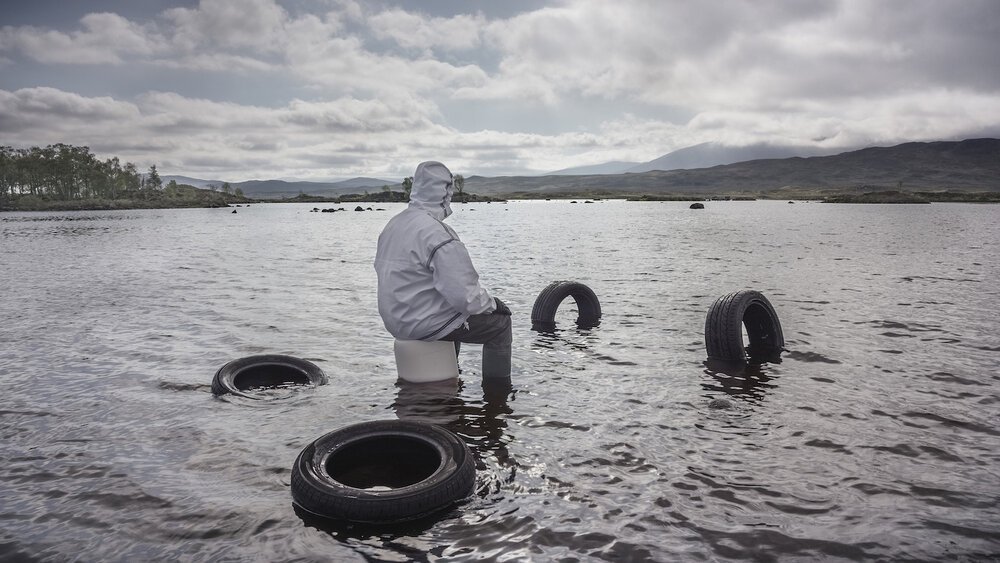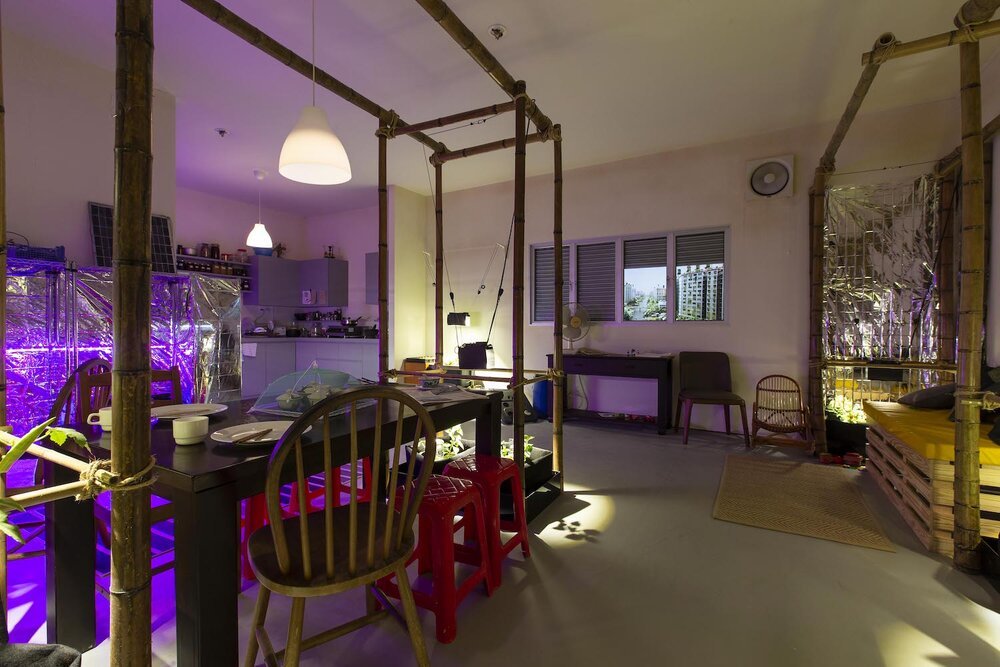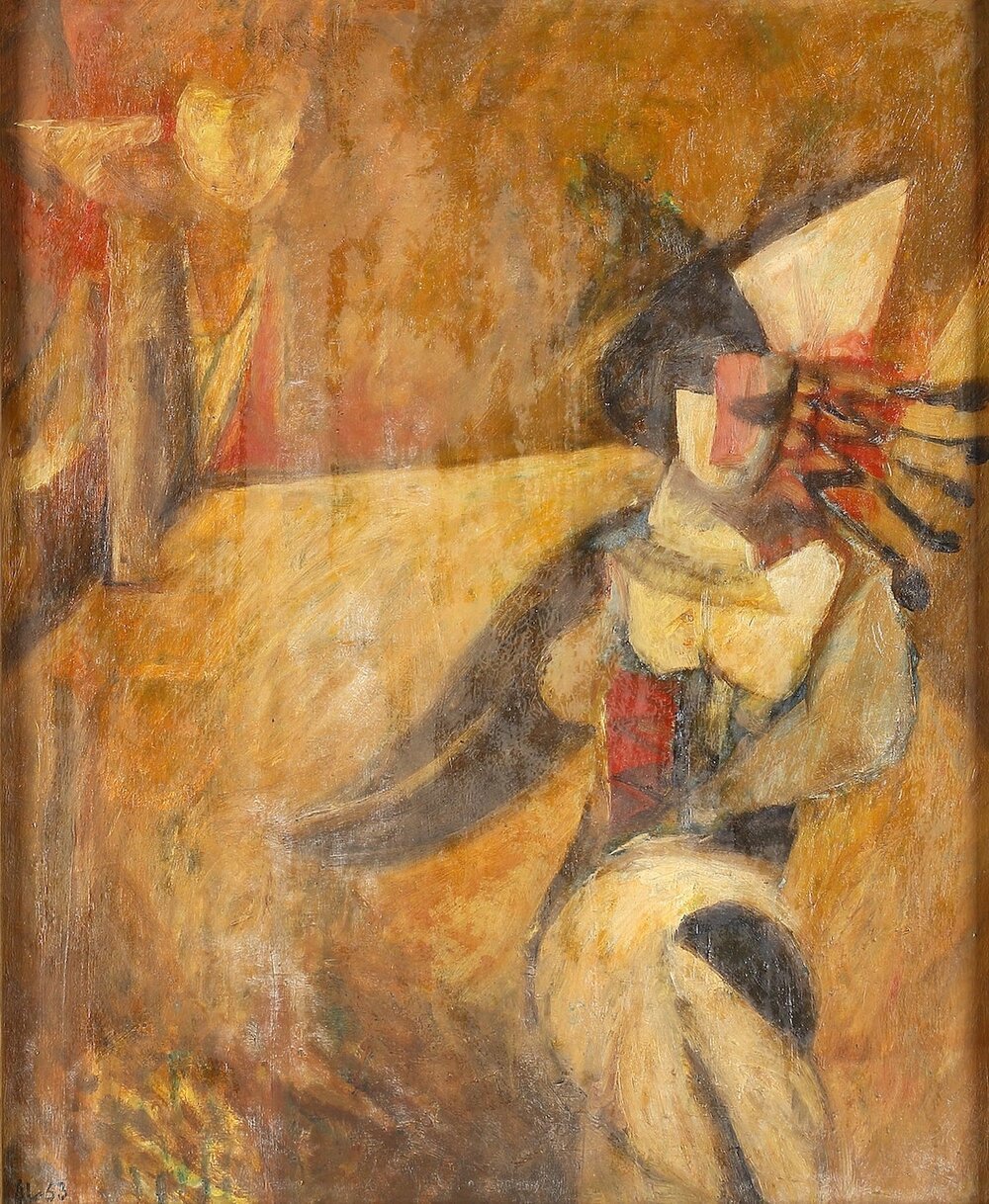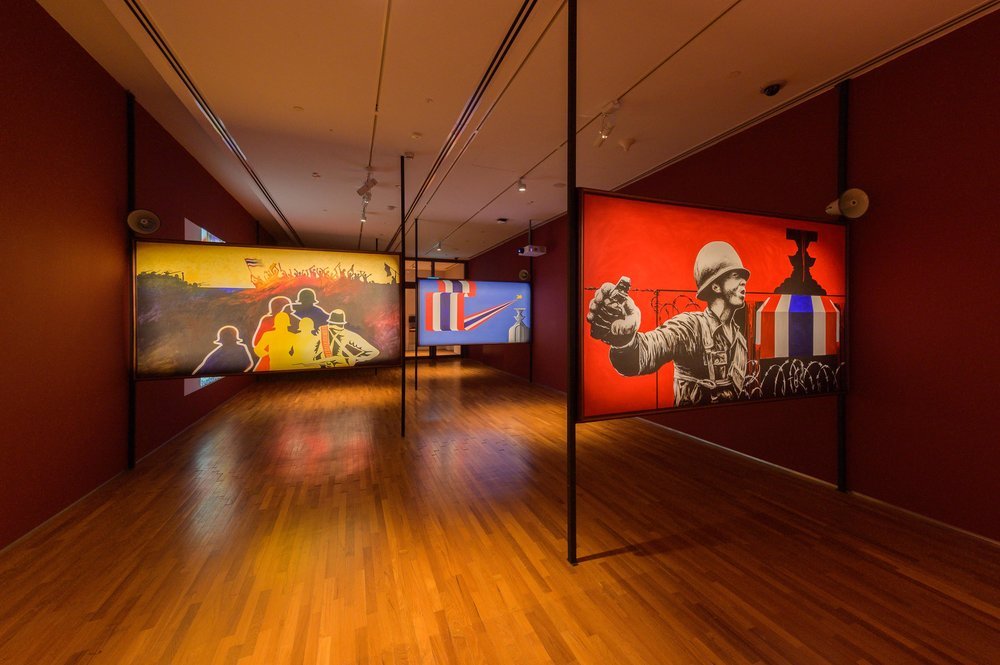Review of ‘2219: Futures Imagined’ at ArtScience Museum
Looking 200 years into Singapore’s future
By Sara Lau
John Akomfrah ‘Purple’, 2017. Image courtesy of Marina Bay Sands.
Inspired by the work of Singaporean writer and poet Alvin Pang, ArtScience Museum’s ‘2219: Futures Imagined’ puts a different spin on this year’s Bicentennial commemorations by looking 200 years into the future instead of the past. An ambitious project that tackles the present issues of climate change and technological advancement, the exhibition claims neither utopia nor dystopia, instead focusing on human-led innovations and adaptations. The exhibition is split into five acts: Arrival, Home, Underworld, Adaptation, and Memory, with each section marking a moment between 2019 and 2219, following a speculative narrative of the future.
John Akomfrah, ‘Purple’, 2017. Photograph by Justin Piperger. Image courtesy of Smoking Dogs Films and Lisson Gallery.
As with most of the exhibitions at ArtScience Museum, the show is an overwhelming visual spectacle. The first act, ‘Arrival’, solely consists of John Akomfrah’s immense six-panel video installation, ‘Purple’. The artist interweaves archival footage with newly-shot film, pairing it with an enthralling soundscape to address the widespread implications of climate change, featuring the landscapes of Alaska, Greenland, Tahiti, and more. The title ‘Purple’ reflects Akomfrah’s Ghanian background, a colour of mourning in the West African culture, reflected in the walls of the room as well. The parallel screening of the film’s multiple narratives is undeniably potent in the way it documents the effects of climate loss and industrial evolution, marking the start of the future.
Superflux, ‘Mitigation of Shock (Singapore Edition)’, 2019. Image courtesy of Marina Bay Sands.
‘Act II: Home’ address the immediate changes that may come, a future that is closer to present times. ‘Mitigation of Shock (Singapore Edition)’ by Superflux reflects the possible grim realities of climate change while emphasising human ingenuity. The installation is an apartment that visitors can walk through, complete with a kitchen, a living space and a dining table. The familiar touches of home juxtaposed against reflective aluminium and bright neon lights present a version of the future that is alienating and yet still familiar. Right next to Superflux stands Hafiz Osman’s ‘The Penghulu (Village Chief)’. The artist introduces the tall bike as a possible mode of transportation in the future, given Singapore’s susceptibility to rising sea levels. The artwork’s name adds an endearing sentiment, a Malay title given to the chief of a village. The title has more significance in Singapore, recalling the settlements and villages from the southern coasts of Singapore, where penghulus were respected and important individuals. Although simple in its making, the artwork’s title is a subtle allusion to Singapore’s history as an islandic nation, while also bringing forward this history into our possible future.
‘The Library of Necessary Books’, 2019. Image courtesy of Marina Bay Sands.
The works featured in ‘Act III: Underworld’ are visually spectacular, but at its heart is the ‘Library of Necessary Books’. In contrast to the blinding LED lights and screens of the installations in Act I and II, the Library features wooden furniture and warm lighting to create an inviting space for visitors to interact with. The collection on display is made up of books donated by visitors, who were asked to contribute books that they deemed to be important for future generations. Eclectic in nature, the books are rotated for display by the librarians, and visitors are encouraged to continue donating their old books for the show. The Library as a whole considers the question of value, particularly of our cultural text and material. The artworks of Gordon Cheung and Fyerool Darma are also incorporated into the space, unfortunately appearing as afterthoughts. Cheung’s works, while aesthetically pleasing, hold very tenuous links to the theme of the library. The exhibition text was omitted entirely for Darma, which is a pity considering that the series on display, ‘Moyang’ (Ancestor), resonate very well with the entire exhibition.
Rimini Protokol, ‘win><win’, 2017. © CCCB 2017. Photograph by Martí E. Berenguer.
Bao Songyu, ‘Museum of Marine Life 2119’, 2019. Image courtesy of Marina Bay Sands.
‘Act IV: Adaptation’ is the smallest section with the most ambitious ideas, centering on Rimini Protokoll’s ‘win><win’, an interactive installation that imagines a future dominated by jellyfish, as the acidified and warmed seas allow for this species to thrive. The installation is meant to be immersive and thus visitors are split into groups before they are allowed to enter the installation space, restricted to short windows of time to experience it. The installation is accompanied by Bao Songyu’s ‘Museum of Marine Life’, a series of kinetic sculptures modelled after marine specimens, along with Shan Hur’s quirky ‘Ball in the Pillar’.
Zarina Muhammad, ‘Calendrival Systems for the Afterlife’, 2019. Image courtesy of Marina Bay Sands.
Adeline Kueh, ‘Everything but Gold’, 2019. Image courtesy of Marina Bay Sands.
‘Act V: Memory’ is arguably the strongest section following ‘Act 1: Arrival.’ All the artworks connect with each other well, echoing similar ideas about the importance and implications of our social and cultural memory, thus creating a conceptually concise space. It begins with Larry Achiampong’s ‘Relic Traveller 0, 1 and 2’, a series of video works that combine Afrofuturist imagery with masterful prose written from a postcolonial perspective. Following Achiampong comes Zarina Muhammad’s ‘Calendrical Systems for the Afterlife’, a shrine that honours the spirits of past and present while questioning the space for rituals and rites in the Anthropocene. The next slew of installations mark the end of the journey by returning to the present, with Priyageetha Dia’s documentation of ‘Golden Staircase’ and ‘Gold Flags’, Yanyun Chen’s ‘娘 niang ‘ (wife) and Amanda Heng’s ‘Another Woman No. 2’, a reminder of current-day issues while we look forward to the future. The exhibition ends with Adeline Kueh’s interactive ‘Everything but Gold’, calling for visitors to pen their wishes for the future onto strips of paper. These are subsequently rolled into beads and strung up as beaded curtains – an homage to the artist’s heritage that simultaneously acts as a metaphor for hope.
Beneath the repeated imagery and ideas of a future driven by hypertechnology lies an undercurrent of unease about the present, about a future that does not see resolution to local and global contemporary issues such as imbalanced powers, colonialism, sexism, racism, and socio-economic inequality. ‘2219: Futures Imagined’ has all the bells and whistles one has come to expect of an exhibition at the Art Science Museum. However, its true value comes from the questions and possibilities that it raises, in challenging viewers to imagine a future that is still rooted in the present.
‘2219: Futures Imagined’ is on view at the Art Science Museum till 5 April 2020.





















